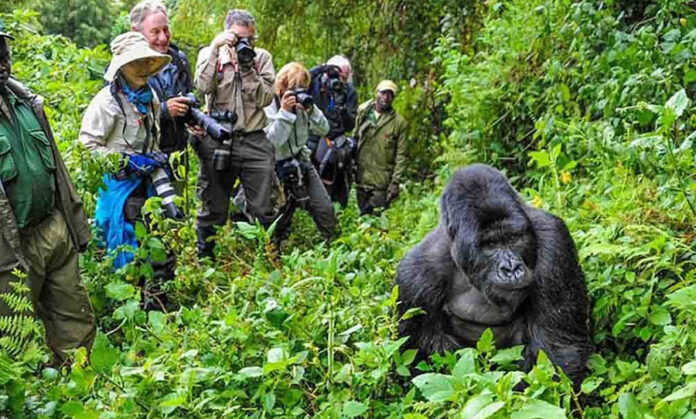Nestled in the heart of Africa lies a haven for nature enthusiasts and adventure seekers – Uganda. The lush landscapes, diverse ecosystems, and warm hospitality have made Uganda a gem for ecotourism, and at the heart of this allure stands a magnificent species that has become the emblem of conservation success – the mountain gorilla. As we celebrate 30 years of gorilla tourism in Uganda, it is not merely a commemoration of time passed but a testament to the remarkable journey of conservation, community engagement, and sustainable tourism that has unfolded over three decades.
The Genesis of Gorilla Tourism
In 1991, Uganda embarked on an ambitious journey to protect and preserve its endangered mountain gorilla population by introducing gorilla tourism in the Bwindi Impenetrable Forest. This visionary move aimed not only to conserve critically endangered species but also to generate sustainable income for local communities, thereby fostering a symbiotic relationship between conservation and socio-economic development.
Conservation Milestones
The impact of gorilla tourism on the conservation of these majestic creatures has been nothing short of extraordinary. Thirty years ago, the mountain gorilla population in Uganda was dwindling perilously, with poaching, habitat loss, and human-wildlife conflict pushing them to the brink of extinction. Today, the numbers tell a different story. Thanks to dedicated conservation efforts, the mountain gorilla population in Uganda has witnessed a steady increase, offering a glimmer of hope for the future of this iconic species.
The establishment of protected areas, stringent anti-poaching measures, and community-based conservation initiatives have played pivotal roles in this success story. The engagement of local communities in the conservation process has not only ensured the safety of gorillas but has also empowered communities to become stewards of their natural heritage.
Sustainable Tourism and Community Development
Beyond the conservation impact, gorilla tourism has been a catalyst for sustainable development in the region. The revenue generated from tourism has been reinvested into local communities, funding education, healthcare, and infrastructure projects. This virtuous cycle of conservation leading to economic empowerment has created a sense of ownership and pride among the local population, making them active partners in the ongoing conservation efforts.
Local communities have also become instrumental in promoting responsible tourism practices. Through community-based tourism initiatives, visitors are not only treated to the awe-inspiring beauty of the gorillas but are also immersed in the rich cultural tapestry of the region. This approach not only enriches the travel experience but fosters a deeper understanding of the delicate balance between wildlife conservation and community livelihoods.
International Collaboration
The success of gorilla tourism in Uganda is a testament to the power of international collaboration. Conservation organizations, governmental bodies, and non-profits from around the world have joined hands to support Uganda’s efforts in protecting its natural heritage. Research initiatives, habitat restoration projects, and capacity-building programs have all contributed to the holistic approach toward gorilla conservation.
International tourism has also played a pivotal role in spreading awareness about the importance of preserving the habitats of these gentle giants. Visitors from across the globe, drawn by the allure of gorilla trekking, become ambassadors for conservation when they return home, sharing their experiences and advocating for the protection of these endangered species.
Challenges and Future Outlook
While celebrating the achievements of the past 30 years, it is crucial to acknowledge the challenges that lie ahead. The delicate balance between tourism and conservation requires constant vigilance. Striking the right balance to ensure the well-being of both the gorillas and the communities is an ongoing process that demands adaptability and foresight.
Climate change, emerging infectious diseases, and human-wildlife conflict pose significant threats to the fragile ecosystems that support mountain gorillas. As Uganda looks to the future, a commitment to sustainable practices, ongoing research, and adaptive management strategies will be paramount in safeguarding the gains made over the last three decades.
Conclusion
As we celebrate 30 years of gorilla tourism in Uganda, it is a moment of reflection, gratitude, and commitment. The success of this journey is not merely measured in the number of tourists who have marveled at the sight of a silverback in the misty mountains but in the resilience of a species, the empowerment of local communities, and the global collaboration that made it all possible.
Uganda’s story is an inspiration for conservationists and nature lovers worldwide. It underscores the potential for positive change when communities, governments, and the international community unite for a common cause. As we look ahead, the celebration is not just about the past but a rallying call for the future – a future where gorilla tourism in Uganda continues to thrive, where communities prosper, and where the majestic mountain gorillas roam freely in their natural habitats, ensuring that their legacy endures for generations to come.

